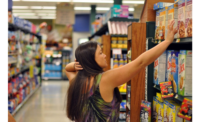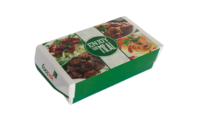Is it time for packaging to get personal?

Personalized packaging used to be exclusive to luxury brands and high-end gifts, but today mass consumer-friendly brands like Coca-Cola are getting personal with their customers, as we see with the Coca-Cola “Share a Coke” campaign.
The 2015 campaign wrapped up in September, and Coca-Cola noted a 2.5 percent increase in sales, all attributed to the “Share a Coke” campaign. Beginning in 2014, Coca-Cola created and designed Coke cans with common names and phrases such as “Chris,” “Friends” and “Class of 2015.” As reported in Adweek, Coca-Cola also earned more than 1.14 billion impressions across social media.
The success of this campaign, as well as similar drives by Snickers “You’re Not You When You’re Hungry” campaign and Bud Light’s NFL-themed cans initiative for this football season, showed the packaging industry that personalizing products for your audience is possible outside of the luxury sector. Not only that, but they are also hugely popular and create buzz for brands.
However, beyond this handful of brand campaigns, personalization through digital print-enabled variable packaging is still not widely used. Why isn’t the industry latching onto this trend yet? Will we be seeing this tactic used on a wider scale in the near future?
To answer our first question, we must consider the barriers to personalization in packaging.
Barrier No. 1: Cost
Cost is at the forefront of most brands’ decisions. There is a good reason why personalization has been limited to the high-end and luxury side of the sector until now: designing and delivering personalized packaging carries a disproportionately high price tag for items otherwise classified as economy and everyday purchases.
Additionally, consumer appetite for personalized packaging still hasn’t been extensively tested: how much will consumers be willing to spend to see their name on the front of a product, if not in lights? It might not be as much as many brands believe.
Barrier No. 2: Logistics
A related barrier is logistical. If we do not yet know how much consumers are prepared to spend on this trend, in a similar vein, we don’t know the lengths to which they will go to procure something personalized. Some previous personalization campaigns have relied on consumers purchasing a product in-store and sending off for a personalized label. This process is somewhat convoluted, especially in an age of instant access, but it could soon be streamlined as in-store printers become more common.
Barrier No. 3: Demand
Aside from cost and logistics, a final hurdle is one of demand. While seeing your name or favorite football team on a canned drink is a novelty, are today’s consumers crying out for it?
A counterargument to this is that few people look for items featuring their own name. However, many consumers with little time want to purchase gifts with a personal touch and are willing to pay a premium for that added personalization on a favorite product.
From this perspective, personalization offers the perfect solution for rushed people buying presents online during busy holidays, such as Christmas, Valentine’s Day or Mother’s and Father’s Day.
This is when we can see personalization having the desired effect. In terms of consumer engagement and campaign impact, personalization in packaging can work extremely well.
However, in order for this trend to take off, the industry must adapt its view of personalization and see it as less of a costly, unwieldy process and more of a clever tactic along the lines of mass customization.
This means personalization going from the individual to the distinct. Advances in digital printing could soon spur major brands to become more nimble with their packaging – adapting packaging designs to react to seasonal or local events, even news stories and figures.
Although personalization is likely to remain firmly in the luxury and high-end space, or to punctuate a short, sharp, seasonal campaign, forward-looking brands should explore the latest innovations in digital printing to see how mass customization can give them an edge over competitors.
About the Author
Ian Lifshitz is the sustainability director for the Americas for Asia Pulp & Paper Group (APP). He is responsible for leading the company's sustainability and related stakeholder engagement programs across Canada, the United States, and South America. Ian is also charged with leading the company's North American CSR activities, translating and communicating many of APP's successful conservation, biodiversity and social community programs to North American audiences.
Looking for a reprint of this article?
From high-res PDFs to custom plaques, order your copy today!







